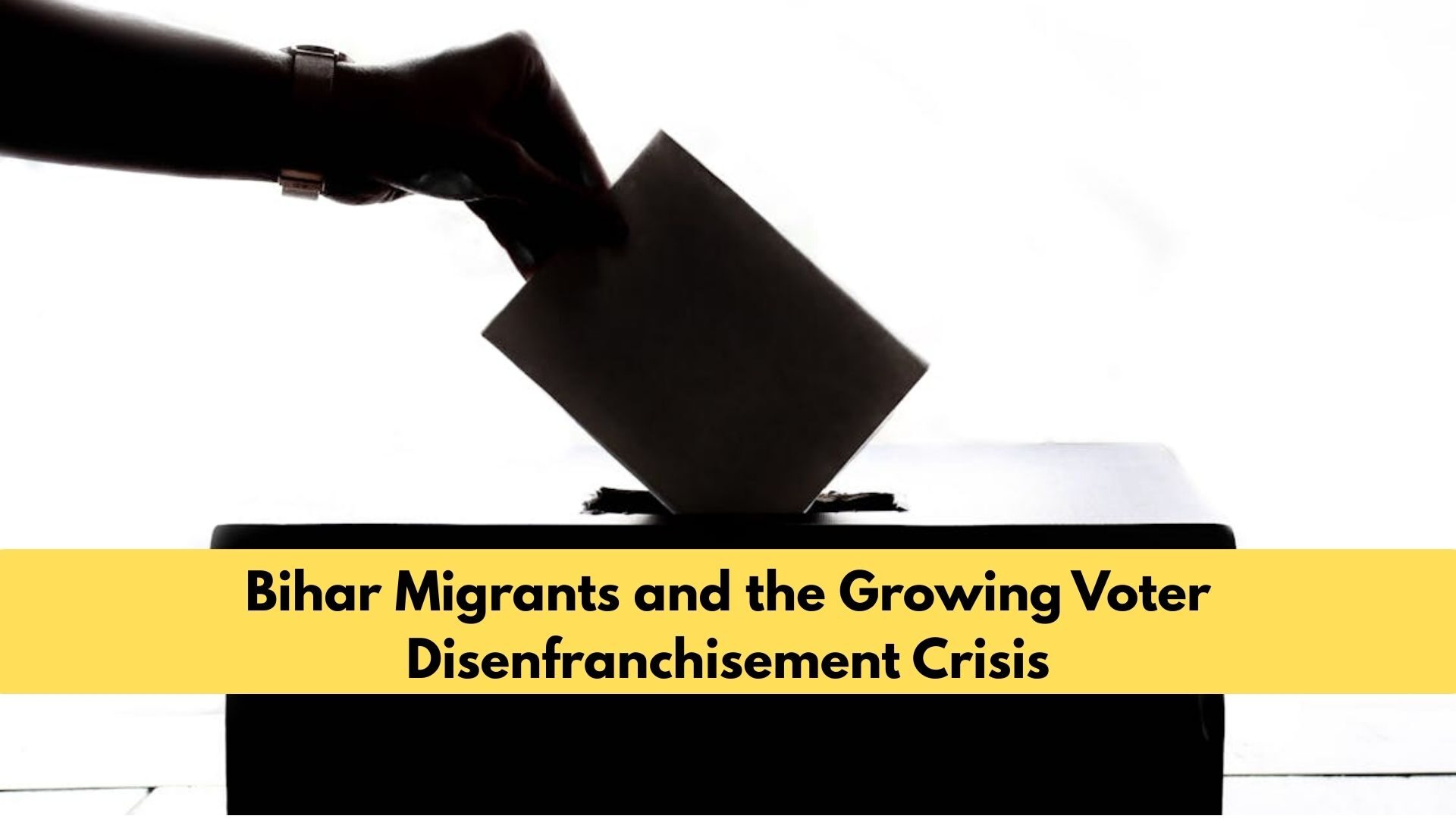Migration and Electoral Deletion
Bihar Migrants and the Growing Voter Disenfranchisement Crisis: The Special Intensive Revision (SIR) 2025 of electoral rolls in Bihar has removed nearly 3.5 million migrant voters. They were marked as permanently migrated because they were absent during house-to-house verification. This large-scale deletion threatens to exclude a sizeable population from participating in elections in both their home and workplace constituencies.
Static GK fact: The Election Commission of India (ECI) was established on January 25, 1950, which is now celebrated as National Voters’ Day.
Long History of Out-Migration
Bihar has relied heavily on out-migration for survival and economic sustenance. Migrants follow seasonal and circular patterns, often splitting families between Bihar and host states. The SIR process, built for a sedentary population, equates absence with abandonment, which has led to disenfranchisement.
Challenges Faced by Migrants
India’s voter registration system requires residence proof and physical verification. Migrants staying in rented rooms, hostels, or informal settlements struggle to meet these requirements. Host states also hesitate to register them due to political fears of altering local vote outcomes.
Static GK Tip: The Representation of the People Act, 1951, governs the conduct of elections in India.
Regionalism and Political Exclusion
Regional sentiments often fuel exclusion of migrants from host state voter lists. Migrants are seen as outsiders competing for jobs and political space. Bihar’s migrants thus face a double exclusion – barred from host state rolls and deleted from Bihar’s rolls.
Research Findings
A 2015 Tata Institute of Social Sciences study highlighted the triple burden on migrants: administrative barriers, digital illiteracy, and social exclusion. It also showed a direct link between high migration states and lower voter turnout. Bihar’s recent electoral roll deletions have intensified this democratic gap.
Seasonal Migration and Festivals
Every year, nearly seven million circular migrants move out of Bihar for work. Almost half return during festivals like Chhath Puja and Diwali. Yet many of these returnees will miss the 2025 Assembly elections due to their names being deleted from rolls.
Dual Residency Issues
Migrants hold onto their Bihar voter IDs due to lack of acceptance in destination states. This dual residency—economic in host states and political in Bihar—creates bureaucratic hurdles. The current system treats such dual belonging as irregular.
Border Complexities with Nepal
Migration along the India–Nepal border adds another layer of difficulty. Families often span across borders, and women migrants are particularly vulnerable. Strict documentation requirements risk rendering them stateless or without voting rights.
Static GK fact: The India–Nepal Treaty of Peace and Friendship 1950 allows free movement of people and goods across the border.
Way Forward with Portable IDs
India needs a portable voter ID system that ensures mobility does not erase democratic rights. Cross-verification between origin and destination states can help stop blanket deletions. Panchayats and NGOs must conduct outreach to assist migrants in re-enrolment. Kerala’s Migration Survey model provides a successful template for states with high out-migration.
Static Usthadian Current Affairs Table
Bihar Migrants and the Growing Voter Disenfranchisement Crisis:
| Topic | Detail |
| Electoral Roll Deletion | 3.5 million Bihar migrant voters removed in SIR 2025 |
| Migration Pattern | Seasonal and circular migration with split families |
| Key Study | 2015 TISS study on barriers to migrant political participation |
| Annual Migration | About 7 million leave Bihar for work every year |
| Festival Return | Nearly half return during Chhath Puja and Diwali |
| Legal Framework | Representation of the People Act 1951 governs elections |
| Dual Residency Issue | Migrants retain Bihar voter IDs, denied in host states |
| Border Complexity | India–Nepal migration affects citizenship and rights |
| Treaty Reference | India–Nepal Treaty of Peace and Friendship 1950 |
| Reform Proposal | Portable voter ID and Kerala migration survey model |








